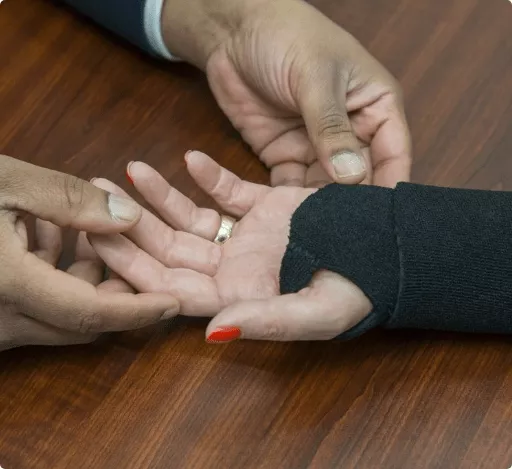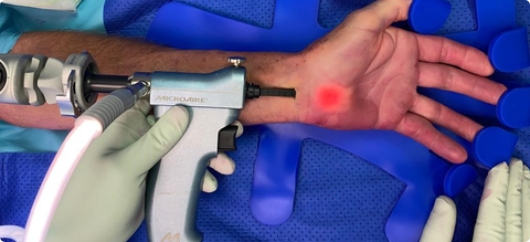Carpal Tunnel Syndrome Treatments
How do you treat carpal tunnel syndrome?
Carpal tunnel syndrome may be treated using conservative approaches or surgery. The conservative treatments include:
- Treating underlying medical conditions.
- Immobilization of the hand and wrist with a splint or wrist brace for 4-6 weeks.
- Rest the hand for 2 weeks or more.
- Ice packs to avoid swelling.
- Avoid activities that tend to worsen the symptoms.
- Medications such as non-steroidal anti-inflammatory drugs and steroid injections.
- Strengthening and stretching exercises once symptoms diminish.

If conservative treatment options fail to resolve the condition your surgeon may recommend surgical procedure. This is performed as an Endoscopic Carpal Tunnel release or an Open Carpal Tunnel release.
Book an Appointment Today!
What is an Open carpal tunnel release?
This is a small day procedure. It can be performed under local or general anaesthetic. A small 2cm incision is made in the palm. Through which the “roof” of the carpal tunnel, the transverse carpal ligament, is incised and released. This relieves the pressure on the Median Nerve. An opportunity is often used to inspect the carpal tunnel and the nerve for other causes of compression.
Immediately post operatively you have functional use of your hand. At two weeks once the wound as healed, you will have full use of your hand.
What is an Endoscopic carpal tunnel release?
This is a keyhole method to perform a Carpal tunnel release. It involves a small incision approximately 1 cm long. Like the open procedure the “roof” or the transverse carpal ligament is incised and the carpal tunnel is decompressed. It is a day procedure performed under local or general anaesthetic.
The advantage of performing the release endoscopically is a smaller incision, arguably less pain and an expediated return to full use of the hand. This is ideal especially for bilateral carpal tunnel releases.

